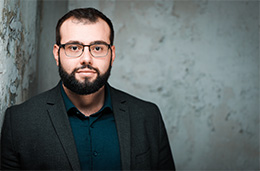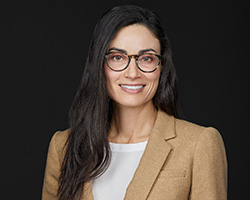- News
HBP Summit 2023: Meet our keynote speakers!
28 March 2023
The Human Brain Project’s last Summit is starting today in Marseille. During four Keynote Sessions, which will take place on each day of the summit (28-31 March), leading researchers at the forefront of their fields of study will discuss their results and anticipate the future of digital neuroscience.
Keynote 1: Michael Breakspear – The future of digital neuroscience
Digital tools have dramatically shaped the way neuroscience research is carried out, and will continue to do so in the years to come. What will the future of digital neuroscience bring us?

Michael Breakspear, Professor of Systems Neuroscience at University of Newcastle, uses the HBP’s digital resources of EBRAINS and The Virtual Brain to study the generative processes underlying bipolar disorder, schizophrenia, dementia and healthy ageing. In his view, the HBP allowed researchers to combine disciplinary resources and take on challenging projects that would not be possible via traditional funding mechanisms.
Breakspear: “In my Keynote Session I will talk about recent explosions of knowledge in three areas of recent substantial growth: Digital Brain Maps, Humans & Machines, and Whole Brain Computer Simulations. These areas cross intriguing branches of both science and society. My talk will be broadly oriented, discussing the possibilities these areas offer and the social bounds they threaten to trespass. I will finish however with a focus on human thought - specifically theories and creativity, because none of these digital resources are useful unless we continue to foreground the role of human thought in making sense of the brain through narratives and theories.”
Keynote 2: Andreas Rowald – A computational approach to precision neurostimulation
Neurostimulation is a promising technique for treating conditions such as Parkinson’s disease, paralysis and depression. With EBRAINS virtual brain models and digital twins, the effects of neurostimulation can be simulated digitally before the technique is used in clinical settings.

Andreas Rowald, research group leader of the ProModell Group at the Chair of Digital Health at the Friedrich Alexander University Erlangen-Nürnberg (FAU) in Germany, is specialized in researching treatment of individuals with paralysis. For Rowald, the HBP played a significant role in shaping his interest in neurostimulation as therapy, and provided him the opportunity to connect with leading researchers from diverse disciplines to implement his ideas.
Rowald: “Neurostimulation strategies show much promise for treatment, but clinical translation requires tools for the efficient identification of effective and safe stimulation parameters. In my Keynote Session I will share my perspective on the crucial role that personalized digital twins are going to play in expediting development of neurostimulation therapy, and in providing clinical decision support for devising treatment strategies.”
Keynote 3: Lauren Ross – Causal explanation in neuroscience: mechanisms and pathways
Interpretation and explanation of findings from neuroscience research depend heavily on the concept of causality. How does causal reasoning play a role in explaining neuroscientific results?

Lauren Ross, Associate Professor in Logic and Philosophy of Science at UC Irvine, researches and identifies features characteristic of the causal systems and explanations we use in scientific contexts. For her, the goals of the HBP align with the necessity to study a topic with multiple approaches and strategies, and from different perspectives.
Ross: “In my talk I will explore different types of causal systems in neuroscience and their role in explaining brain outcomes. I will clarify the main features of the most commonly used causal concepts in neuroscience: mechanisms and pathways. How do these concepts differ from each other, and what unique types of explanation and understanding do they provide?”
Keynote 4: Hannah Monyer – The short and the long of inhibition
Inhibitory neurons play an essential role in transmitting information in the brain. Although often seen as mainly processing local information in simple feedback mechanisms, their functions and projection targets have been shown to be much more diverse.

Hannah Monyer, Professor and Head of the Department of Clinical Neurobiology at the Medical Faculty of Heidelberg University, focuses her research on synaptic plasticity, learning and memory, for which she uses a large array of techniques employing molecular biology, electrophysiology, optogenetics and behavioral approaches. Monyer strongly advocates interdisciplinary and multispecies research, exemplifying goals that are at the core of the HBP.
Monyer: “In my Keynote Session I am going to present research on the most common inhibitory cell type in the brain, and the one I have studied for more than 30 years: the GABAergic neuron. In addition to discussing the latest science, I will also consider more broadly how different technical advances and leaders in the field have shaped the directions the research has taken, and how prevailing dogma’s and fashions have hampered progression.”



